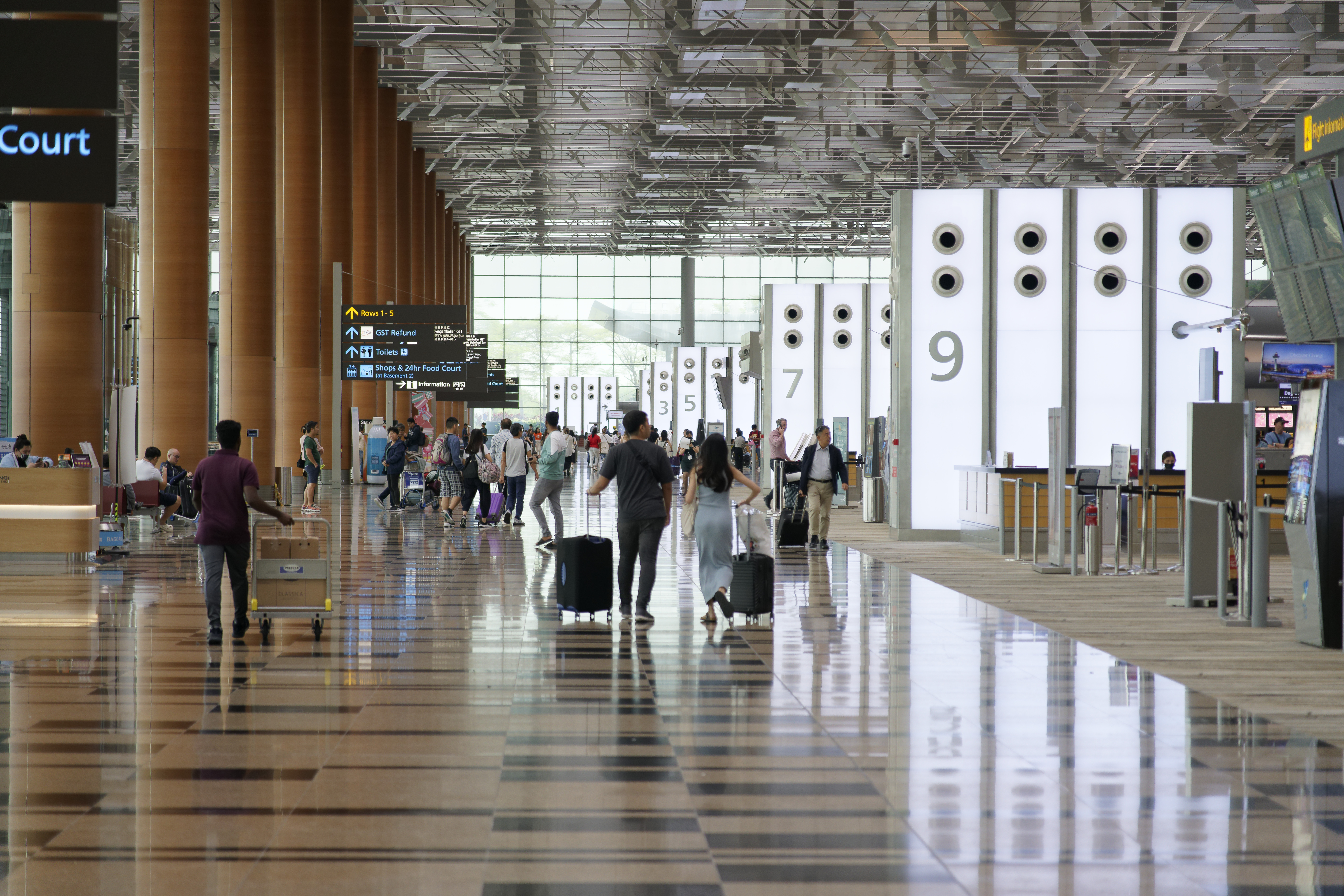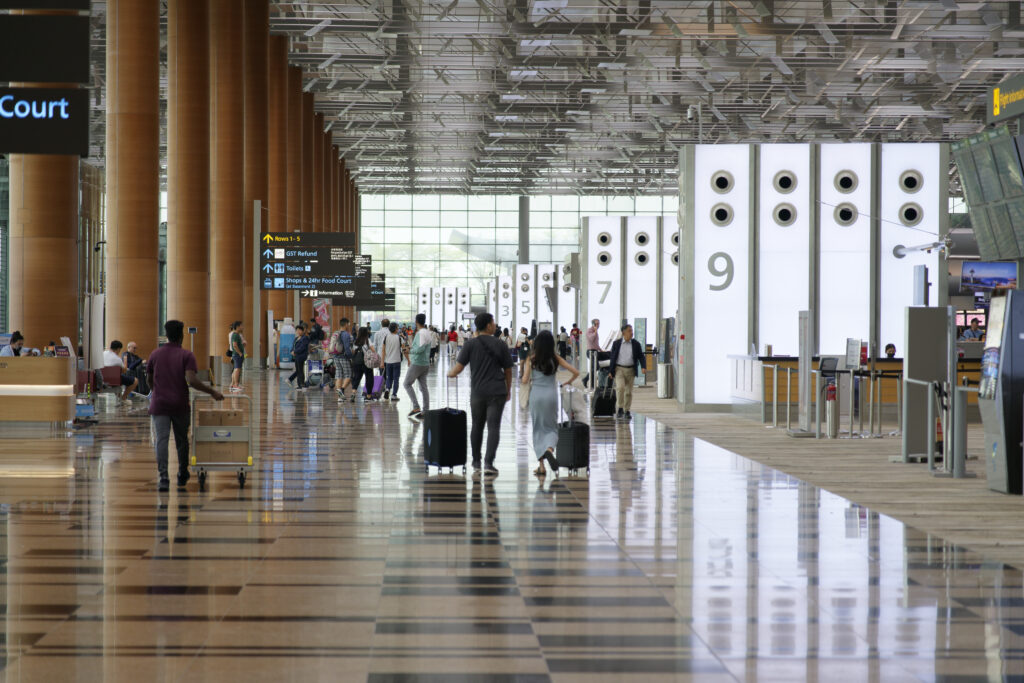

Changi Airport Group (CAG) will invest S$3 billion over the next six years in Singapore Changi Airport Terminals 1 to 4 to improve services such as baggage handling, check-in, immigration and Skytrain connections between terminals, as well as to replace end-of-life systems to facilitate smoother passenger and airline experience. The investments will help Changi Airport stay competitive and meet rising demand for air travel before Terminal 5 is operational in the mid-2030s.
Airport charges will be progressively raised between 2025 and 2030, to fund these investments, and cater for higher operating costs such as manpower. This also enables the recovery of significant investments made during the Covid-19 pandemic, such as the expansion of Terminal 2 and check-in counter capacity in Terminal 3, when passenger fees and airlines charges were frozen and planned increases were suspended. To help airlines with the transition, a 50% rebate on increases in landing, parking and aerobridge (LPA) charges will be given to airlines for the first six months.
Based on current ticket prices, the increase in passenger fees is estimated to be about 1% or less for an economy class ticket on most flights departing from or connecting through Singapore. The Civil Aviation Authority of Singapore (CAAS) will work with CAG to monitor the air hub’s performance to respond nimbly and make further adjustments if needed, to ensure the air hub’s competitiveness.
Investments to keep Changi Airport at the forefront
Air travel demand is expected to grow strongly over the next few decades, particularly in the Asia-Pacific region. Both the International Air Transport Association and Airports Council International have projected global passenger volumes to at least double between 2023 and 2043, with Asia-Pacific recording the fastest rise, and contributing to more than half of this growth. As a major air hub for the Asia-Pacific region and beyond, Changi Airport is well-poised to serve this rise in demand and provide better connectivity to travellers. The aviation sector will continue to be a key driver of economic growth for Singapore and provide more and better jobs for Singaporeans.
Over the past few years, including during the Covid-19 pandemic, CAG has invested heavily in airport infrastructure to position the Changi air hub for recovery and growth. These include the significant expansion and upgrading of Changi Airport Terminal 2 spanning the departure, immigration and transit halls and its baggage handling system, increasing the terminal’s handling capacity by five million to 28 million passengers per annum; additional check-in facilities in Terminal 3; new aircraft parking stands as well as operationalisation of the three-runway system.
CAG will further invest S$3 billion over the next few years to expand Changi Airport’s capacity, efficiency and resilience, improve the passenger experience and make the airport a more attractive place to work. The investments include the following:
Rejuvenation of Skytrain subsystems: Changi Airport will replace various Skytrain subsystems, including signalling and communications, which started operations in 2008 and are nearing end-of-life. New cars will also be added to provide additional capacity. The rejuvenation will help improve operational performance before the entire system is overhauled in the late 2030s.
Upgrading of Terminal 3 Baggage Handling System and the new Terminal 1 to 3 Inter-Terminal Baggage Conveyance System: Changi Airport will upgrade its Terminal 3 Baggage Handling System to enhance capacity, energy efficiency and resilience. The upgrade includes a revamp of its Early Bag Storage subsystem that will boost capacity by 65%.
A new rooftop Inter-Terminal Baggage Conveyance System connecting Terminal 1 to Terminal 3 will also be constructed, creating a second pathway for passenger baggage to be transferred between the two terminals. This will ease the demand on the current underground system and reduces manpower needed for the towing of baggage.
More check-in rows at Terminal 4: A new check-in row is being constructed at Terminal 4’s departure level. It will integrate Fast and Seamless Travel facilities comprising self-service check-in kiosks and automated bag drops. The new facilities will increase the terminal’s
check-in capacity by about 15% and allow it to accommodate up to 2,500 passengers per hour.
Expansion of Terminal 1 Arrival Immigration Halls: The capacity of Terminal 1’s East and West Arrival Immigration Halls will be expanded by almost 60%. The larger space will relieve the key bottlenecks for arrival clearance especially during peak periods. Along with the Immigration & Checkpoints Authority’s New Clearance Concept, passengers can expect an even better arrival experience at Terminal 1 in the future.
Strengthening of airside infrastructure: Airlines around the world are set to introduce Boeing’s new B779 family of planes into their fleets when the aircraft is ready for operations by 2026. As the world’s longesttwin-engine aircraft, the B779 has a wheel load that is most demanding on aircraft pavements. While most of Changi Airport’s existing infrastructure can handle the operational demands of the B779, some taxiways will need to be reinforced and contact stands upgraded. In total, Changi Airport will have 39 contact stands across its terminals that can receive this aircraft.
Construction of new airside facilities: CAG also plans to construct more remote aircraft parking stands that can be used for both passenger and cargo aircraft. This will bring the total number of aircraft stands to more than 200. A taxiway will also be extended to connect these facilities to the rest of the airport. These works will meet the rising demand for aircraft parking at Changi Airport. New smart systems will be introduced to minimise delays in aircraft turnaround, enabling airlines to optimise their operations with greater precision.
Refurbishment of Terminal 3: CAG is planning to rejuvenate the systems and terminal facilities at Terminal 3, which opened in 2008 and will be more than 20 years old by 2030. It will be an opportunity to elevate the passenger experience and expand Changi’s retail offerings.
To enhance the safety and well-being of airport workers, CAG will invest in more staff facilities. These include refresh pods to mitigate heat stress, enhancements to lightning shelters to protect staff during inclement weather, and improved staff lounges and rest areas.
Initiatives have also been introduced to improve manpower productivity and create opportunities for upskilling among ground staff so that they can take on higher value roles. These include trials to use artificial intelligence for security screening and to increase automation for airport ground handling operations, such as greater adoption of autonomous vehicles on the apron.
Increase in airport charges and Aviation Levy
Airport charges will be increased progressively between 2025 and 2030 to fund the new investments, and cater for higher operating costs including for manpower and energy. In particular, wages for airport workers have increased over the past few years and are expected to continue growing in line with national initiatives such as the Progressive Wage Model. The charges also take into consideration earlier investments made during the Covid-19 pandemic when charges were held constant from 1 April 2020 to 1 November 2022, and planned increases were suspended to help airlines tide over the crisis. The key revisions can be viewed here.









